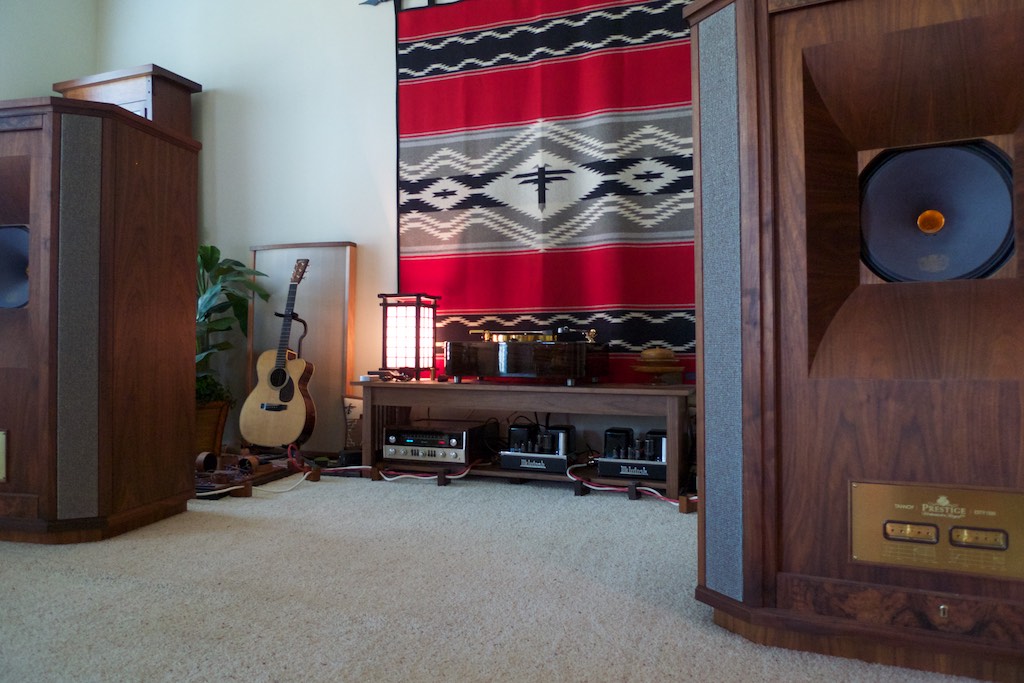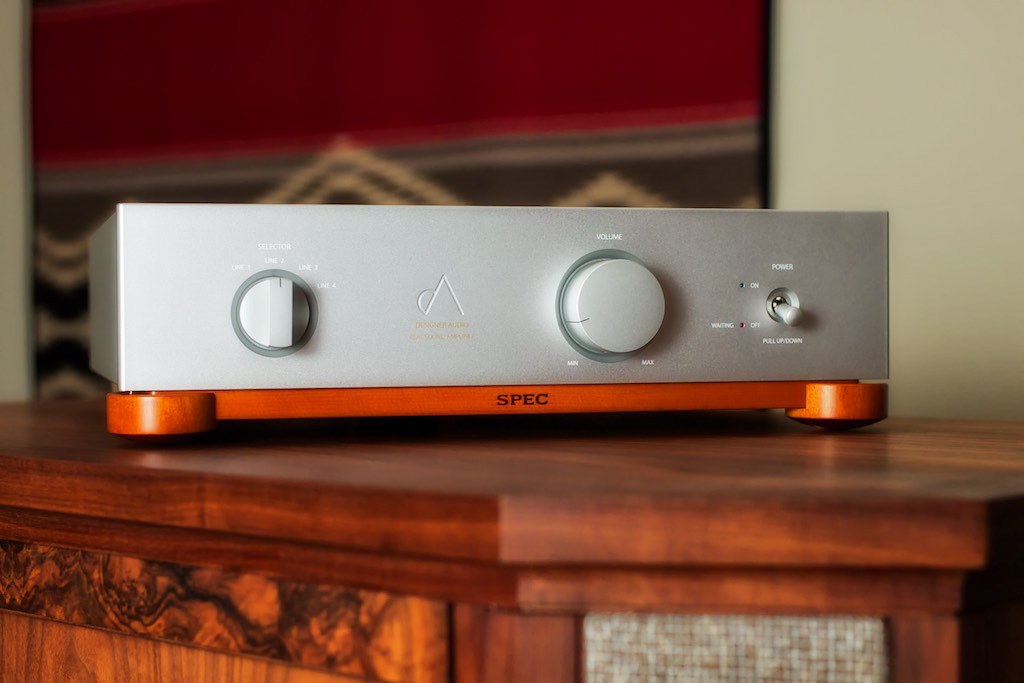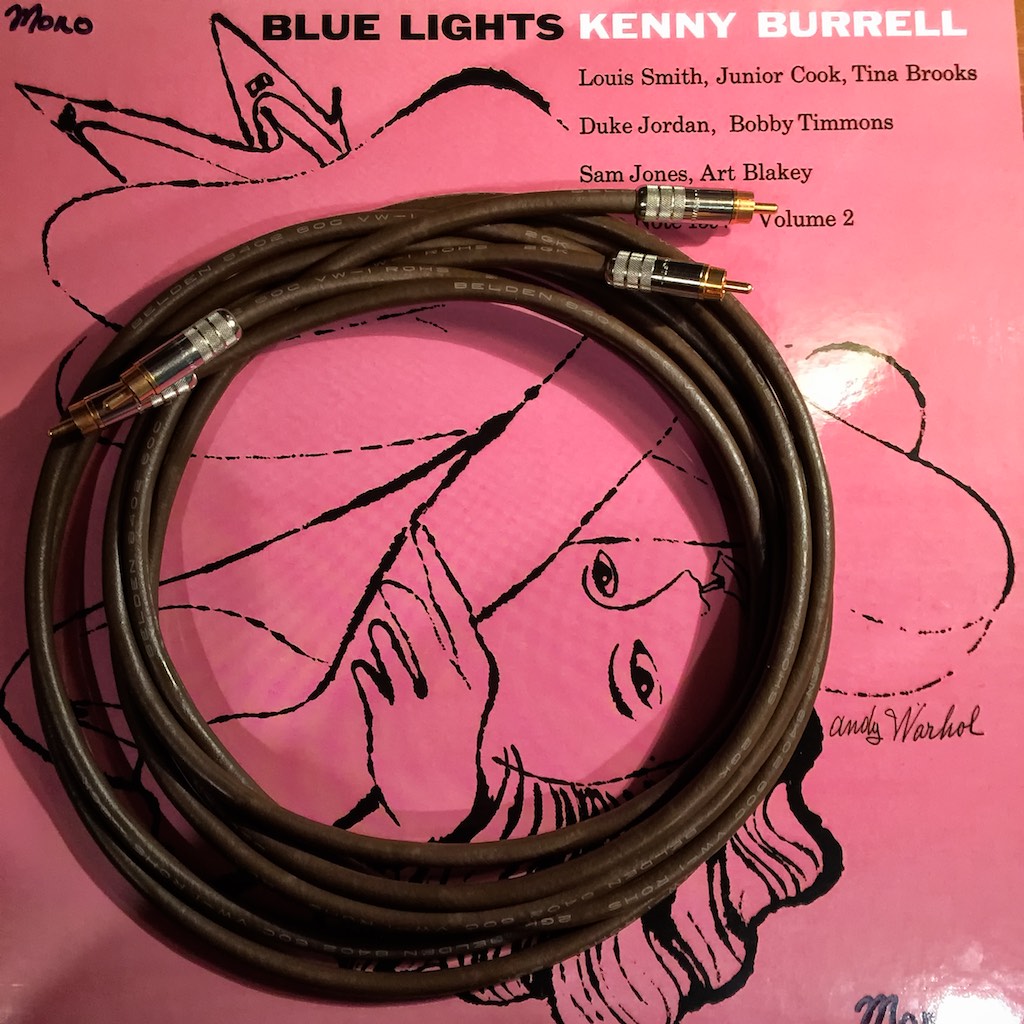If you've been following the blog posts here at Jeff's Place, you know that I asked Mr. Yazaki-san if he would tell us some of his thoughts about "Real Sound", and I'm very pleased to be able to share with you what he has written.
Here's what Mr. Yazaki-san has written for us about "Real Sound":
Dedicated to my friend, Jeff-san
My Personal Thoughts for “Real-Sound”
July 20th /2015, Shirokazu Yazaki
My thoughts have been clearly coming into focus these days, that “when the reproduced sound is changed to a more real one, I can feel more musicality, or in other words, more of the passion of the fabulous playing from it”. Yes, I have confirmed again, that I want to experience an accurate drawing of my favorite superb playing from all ages and countries, for that 'once in a lifetime experience' with reproduced sound, and so I have long searched for my personal “Real-Sound”.
But the storm center of such discussion is, the “Real”, which I feel is coming simply from my personal hearing sense, and I understand or recognize that everyone's personal sense for audio pleasure in the world must be a little bit different from each other. And so I would like to express how my hearing for audio has been formed, so your blog readers can get a common understanding about my personal sense. Accordingly, you could check and confirm how my sense is close to yours, but also, has or not, some kinds of generality and universality.
My First “Real-Sound” Experiences
In 1967, when I entered the university to study mechanical engineering, Japan had already reconstructed and licked its wounds from World War II, and there was an uplift of student power in university discussions, that along with the antiwar movement, seemed to lead the atmosphere of society in Japan. In 1968, the “Prague Spring” and the Martin Luther King assassination occurred, so it was really turbulent times around the world for many others too.
Meantime, my eyes were opened to the music world of jazz by the influence of a friend. I remember well that John Coltrane passed away at that time. There were so many jazz cafés in Tokyo. At the jazz cafés, analog LPs were playing endlessly, and the guests listened to jazz records for hours upon hours, with only a cup of coffee in the dim illumination, and each café developed the sound to compete with the audio system. With that scene, the first modern jazz boom in Japan had come. Well, I already loved the jazz vocals of Anita O’day and Mel Torme, and also adored such brilliant audio products by JBL, Altec, Marantz and McIntosh by the end of my university days. In 1971, I was hired by TEAC, a tape recorder maker, as an engineer. I just recall, it was come about as a natural result for me.
One Sunday afternoon, I went to a jazz café to fill up the time. The café was below ground and I went down the stairs to a thick glass door. When I reached to the door, I could clearly hear the sound through it of someone playing jazz piano. In the next breath, I went into the café, but I couldn’t see anyone playing the piano. I only found & heard two big speakers that were playing lively real piano in the poor lighting. Well, as things turned out, the piece for piano was Chick Corea’s “Piano Improvisation Vol. 1” and the speakers were the ALTEC Magnificent, displayed just like beautiful furnishings (and reminding me of the famous home-use ALTEC A-7), and they were played by either by Marantz or McIntosh tube amplifiers, I think.
I was so shocked at the sound, it could reproduce the strong touch of metal string, the sharp rise of tone timbre, and furthermore the furious penetrating sound field. I found out that sound would be a characteristic of a horn-type speaker. After that, in my audio enthusiasm I desired to have an excellent horn speaker system, and my desire was turned into reality, when towards the end of 1973, I bought a used a pair of ALTEC 414A woofers in a good condition, and then at last I acquired ONKEN OS-NEW500MT drivers and SC-500 WOOD horns in early 1975. My horn speaker system was completed in 1977 with a pair of OS-5000T Esprit tweeters.
There were reasons why I selected the ONKEN horn speaker system, one of which was the exceptionally flat frequency response of the horn speaker, with its thin titanium diaphragm, and the next was the organic & natural tonal character of the wood horn. I have long loved jazz vocals, and the wood horns were especially fine for female vocals. These high efficiency horn speakers, and my GEC DA30 SET non-feedback amplifiers, have long supported my audio “Adventure” into seeking out my “Real-Sound”. In other words, the combination of the highly sensitive horn speaker system with excellent SET non-feedback amplifiers, have long brought me an extraordinary spell of timbre & sound, and also fulfilled my long felt feeling for the pleasure of audio that delivers the true delight of the music.
Recent Trend of “High-End Audio”
To tell the truth, I have a crucial question for the trend of “High-End audio” with efforts to pursue audio quality based on the combination of a low-efficiency speakers and a high-power semiconductor amplifiers, which emphasizes a pursuit of a sound that expands on or behind the plane of speakers by emphasizing the feeling of elaborateness, wide range, and positioning, with a rather thin tonal quality. Even if such a sound presents a high degree of perfection from the viewpoint of audio measurements, does it really bring us the joy and excitement of music?
Unfortunately, I should recognize such sound, composed of low-efficiency speaker and high power semiconductor amplifier, has been the great majority. I suppose this trend might have removed mainstream audio far away from “Real-Sound”. In my opinion, the traditional linear semiconductor amplifier has two major weak points, one is the traditional semiconductor power amp varies the power by supplying the base current to the power stage bipolar transistor or the gate load for the FET. However, as these power semiconductors acts like a variable resistor, the power loss in the power stage leads to useless energies including “Heat”. But also at the power transistor or FET in the end of amplifier stage, the energy should be changed voltage to current. Because that the speaker should be driven by the current. And this transformation leads to inevitable time delay. It could bring thin timbre. And second point is, the transfer function of a semiconductor is poor in linearity, the traditional amplifier inevitably needs to correct the static characteristic by performing negative feedback circuitry. But the negative feedback makes the amplifier stage vulnerable to the counteraction from the speakers, such as back electromotive force, causing complicated phase delays inside the amplifier. It might lead to singsong reproduced music. And these qualitative approaches could well demonstrate the sound or quality of linear semiconductor, I think.
My Thoughts for “Real-Sound”
Strange to say, but a well-built tube amplifier’s sound and latest our Class-D amplifier’s sound is so hard to make a distinction for me, and only the sound of linear semiconductor amplifier must be unorthodox for my hearing. How the joy of music would grow if the current mainstream speakers with wide range but low efficiency can reproduce higher-dimensional acoustic sound like the old vintage high efficiency speakers. In the development of “Real-Sound” amplifiers, I have tried to make it possible to reproduce a tone that is beautiful, rich, and penetrating, as if appealing directly to the human emotions, a real three dimensional field, and a musical sound full of dynamism! Accordingly, we could find more clearly the unique fine technique of player and be moved by feeling the soul of virtuoso directly.
Surely, “Real-Sound” might be faraway dream, but we could reach to very close to the dream by finding out and advancing vintage wisdom with latest technology. I’m just convinced so from the results of Jeff-san’s “Adventure”, questing with Ron-san. And so I need kindred-sprits also in the future for me to pursue my faraway dream of “Real-Sound”.
Many thanks to Jeff-san and Ron-san!!
I would like to thank Mr. Yazaki-san for sharing his experiences and thoughts about "Real Sound", and in particular for introducing examples of it through the SPEC Real Sound Amplifier, SPEC Real Sound Processors, Western Electric WE16GA wire, the Belden 8402 microphone cable interconnects, the vintage McIntosh MC30 'Capacitor Adventure', 'Resistor Adventure', and vacuum tubes with the 'British Fineness of Tone', so that Ron-san, Leo-san, and I could hear for ourselves at Jeff's Place.
Each step along the way, from my first exposure to the SPEC RSA-M3 EX Real Sound Amplifier, the Belden 8402 microphone cable interconnects, the Western Electric WE16GA speaker cables & Duelund crossover wiring, then the vintage McIntosh MC30 monaural amplifiers modified with the Capacitor Adventure, Resistor Adventure, and the British fineness of tone, moved us significant steps toward Real Sound here at Jeff's Place.
With all these elements that contribute to the Real Sound effect incorporated in my Tannoy Westminster Royal SE based system, the effect has been astonishingly good.

WRSE loudspeakers with WE16GA, Belden 8402, and the Real Sound 'Adventure' modifications to the vintage McIntosh MC30 amplifiers.
A case in point: Yesterday Pete Riggle stopped by to find out how I've been getting along with the Woody SPU prototype tonearm (really good is the answer, and more about that soon).
At the same time my buddy Chad stopped into town to visit for the weekend, as he had been out checking his farm property that had been caught up in the wildfires around here, and found that it had been burned to the ground. Everything gone. Major bummer.
What better thing to do than have some fine beverages and have a listening session together to put the world right?
The Real Sound effect of all of Mr. Yazaki-san's suggested modifications to my system is truly stunning, and our listening session turned out to be one of those 'once in a lifetime' listening sessions that Mr. Yazaki-san described in his thoughts above. Pete, Chad, and I listened to a wide variety of music over the course of about 8 hours, and whether it was 33s, 45s, or 78s, test pressings, rock, jazz, gospel, pop, rock, or what have you, every single record was mesmerizing.
Take for an example the Decca 45s in the photo above. Chad had been going through the basement of his cabin on Lake Chelan doing a bit of cleaning and organizing, and he came across a box of 60 year old Decca 45 singles that belonged to his long departed Auntie. There was also one 78 in the mix. They are all mono. Before he drove down to check on his farm property, Chad decided to put the box of records in the car to take so we could give them a listen here at Jeff's Place.
We listened to those old 45s (and the lone 78) of Chad's Auntie through my Real Sound voiced hi-fi system and were absolutely stunned with the results, and it ended up being one of those 'once in a lifetime' listening sessions that Mr. Yazaki-san talked about. Pete remarked to Chad and I that it was one of the most remarkable & memorable experiences he'd ever had in audio, and that he'd never forget it. Chad and I felt the same way. There was truly magic in the air!
Let's see if I can tell you a little about what we heard and felt. Those old single-play 45s had a collection of jazz, big band, gospel, and popular music on them, with artists and songs that we were almost completely unfamiliar with, but from the moment the stylus touched the groove, living, breathing, astonishingly emotive music filled the room.
To quote Yazaki-san, "... it (is) possible to reproduce a tone that is beautiful, rich, and penetrating, as if appealing directly to the human emotions, a real three dimensional field, and a musical sound full of dynamism ..." and that was exactly what we experienced during our listening session.
It is challenging to put into words the momentous effect of listening to those little unfamiliar 45s and 78. The music completely filled the room, free of the loudspeakers boundaries (they disappeared!), and interacted physically with us with unprecedented emotional impact. The tone was stunning, beautiful and rich, and now I understand what Yazaki-san means by 'penetrating' for we could feel the music truly penetrate the fabric of our beings. The sound field was huge and three-dimensional - and this experience from little old mono 45s and a 78 - it was incredibly dynamic ... and well ... real.
And again to quote Mr. Yazaki-san, "Accordingly, we could find more clearly the unique fine technique of player and be moved by feeling the soul of virtuoso directly." This is the result of the Real Sound voicing by Mr. Yazaki-san was the obvious virtuoso musicianship of the performers on every record we listened to was spellbinding. I'm hoping Pete will read this post and comment as well.
Mr. Yazaki-san is really onto something important with his ideas about Real Sound, and his ability to identify the changes that made it a reality in my reference system is remarkable, and I have to say that this is the sound I've wanted to have all my life in my audio system, and for the first time I feel like I've fully realized it.
Much more to come!


































